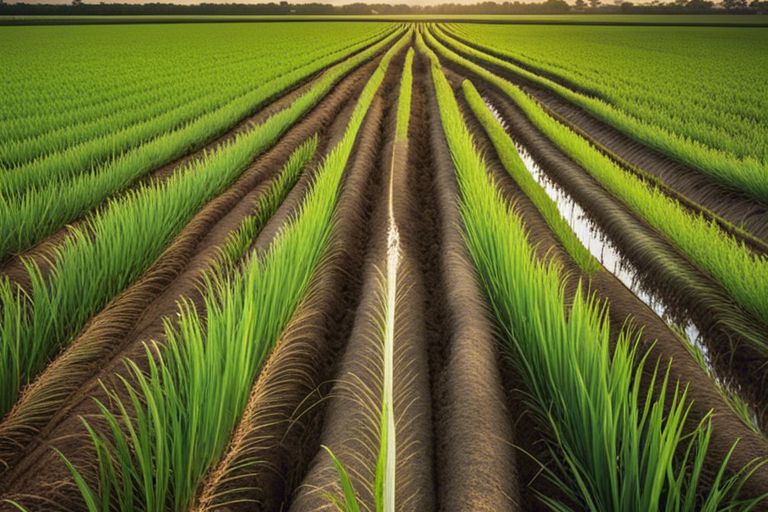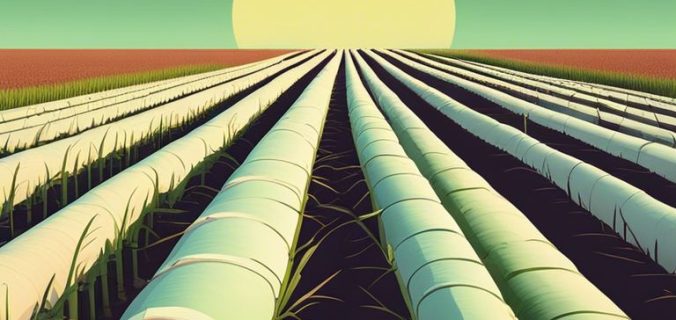Just research into the world of sugarcane sustainability and learn how to produce sugar while minimizing water usage. Discover effective strategies to reduce water consumption, increase eco-friendly practices, and maintain environmental balance in sugarcane production. Follow our expert tips to ensure sustainable farming and responsible resource management for a brighter future in the sugar industry.
Key Takeaways:
- Sustainable farming practices: Implementing sustainable farming practices such as drip irrigation, cover cropping, and crop rotation can help minimize water usage in sugarcane production.
- Water-efficient technology: Utilizing water-efficient technology like sensors and precision irrigation systems can help farmers optimize water usage and reduce waste in sugarcane cultivation.
- Collaboration and research: Collaborating with researchers, industry experts, and government agencies can lead to innovative solutions and best practices for sustainable sugarcane production to minimize water usage.
Understanding Water Usage in Sugarcane Production
Factors Contributing to High Water Consumption
A multitude of factors contribute to the high water consumption in sugarcane production. These include the crop’s high water requirement during its growth stages, the prevalent use of flood irrigation methods, and the need for adequate soil moisture for optimal growth. Efficient irrigation techniques and weather variability also play a role in the amount of water used. This ultimately leads to a substantial water footprint for sugarcane cultivation. This can impact the water availability in the region and contribute to water scarcity concerns.
The Environmental Impact of Excessive Water Use
Sugarcane cultivation can have significant environmental impacts when excessive water is used. The depletion of local water sources, disruption of aquatic ecosystems, and the contamination of water bodies from agricultural runoff are some of the consequences. This can lead to water stress in the region, affecting both the environment and local communities. It is vital to consider the long-term sustainability of water resources in sugarcane production to mitigate these negative effects.
To address the environmental impact of excessive water use in sugarcane production, it is crucial to implement water-saving practices such as drip irrigation, mulching, and the use of water-efficient varieties. This can help reduce water consumption, minimize the strain on water sources, and protect the surrounding ecosystems. By adopting sustainable water management practices, sugarcane growers can contribute to preserving water resources for future generations.
Tips for Reducing Water Usage in Sugarcane Farming
Some tips for reducing water usage in sugarcane farming include:
- Implementing Drip Irrigation Systems
- Mulching and Cover Cropping to Conserve Moisture
- Crop Rotation and Intercropping Strategies
Implementing Drip Irrigation Systems
Sugarcane farmers can implement drip irrigation systems to efficiently deliver water directly to the roots of the plants, minimizing waste and reducing overall water consumption. This method also helps in preventing water evaporation.
Mulching and Cover Cropping to Conserve Moisture
Even mulching the soil and planting cover crops can help in conserving moisture in the soil and reducing the need for excessive irrigation. This natural method retains water and improves soil health.
Implementing proper mulching techniques and selecting appropriate cover crops can create a microclimate that promotes moisture retention and reduces water loss through evaporation.
Crop Rotation and Intercropping Strategies
Little known fact is that crop rotation and intercropping can help in maintaining soil moisture levels and reducing the amount of water needed for sugarcane growth. These strategies improve soil fertility and lessen dependence on irrigation.
How to Optimize Irrigation Systems for Sugarcane
Despite the challenges, optimizing irrigation systems for sugarcane production is imperative for sustainable practices. The Journey to Sustainable Sugar Begins Here | Projects offer valuable insights into how to improve water usage efficiency in sugarcane cultivation.
Soil Moisture Monitoring and Scheduling
While monitoring soil moisture levels and scheduling irrigation accordingly are vital for optimizing water efficiency in sugarcane production. It helps avoid over-watering and under-watering, ensuring that plants receive the right amount of water at the right time.
Using Weather Data to Inform Irrigation Decisions
Data-driven decision-making based on weather forecasts helps in optimizing irrigation practices for sugarcane cultivation. This approach allows farmers to adjust irrigation schedules according to upcoming weather conditions, maximizing water usage efficiency.
Installing Rainwater Harvesting Systems
Soil conservation techniques like installing rainwater harvesting systems can significantly benefit sugarcane cultivation. These systems collect and store rainwater for later use, reducing the dependency on freshwater sources and promoting sustainable water management practices.

Factors to Consider When Selecting Sugarcane Varieties
Many factors come into play when selecting sugarcane varieties to cultivate in order to minimize water usage and promote sustainability in sugar production. Consider the following:
- Disease resistance: Choose varieties that are resistant to common diseases to reduce the need for water-intensive chemical treatments.
- Climate suitability: Opt for varieties that thrive in your region’s climate to maximize water efficiency.
- Yield potential: Select varieties that offer high yields with minimal water input to optimize resource use.
Perceiving the importance of these factors can help farmers make informed decisions when choosing sugarcane varieties for their operations.
Drought-Tolerant Varieties and Their Benefits
For regions prone to droughts, planting sugarcane varieties that are tolerant to drought conditions can help ensure crop success even in challenging environments. These varieties have the ability to withstand periods of water scarcity and continue to grow and produce sugar with minimal irrigation, making them valuable assets for sustainable sugarcane cultivation.
Breeding Programs for Water-Efficient Sugarcane
Factors such as genetic diversity, crossbreeding techniques, and trait selection play a critical role in breeding programs aimed at developing water-efficient sugarcane varieties. By focusing on enhancing drought tolerance and water-use efficiency, researchers and breeders can create sugarcane varieties that require less water while maintaining high yields, contributing to sustainability in the sugar industry.
Final Words
As a reminder, sugarcane sustainability is crucial in balancing the production of sugar with minimizing water usage. Implementing practices like drip irrigation, water recycling, and efficient farm management can help reduce water consumption while maintaining a successful sugar production industry. It is vital for farmers, policymakers, and stakeholders to collaborate and prioritize sustainable practices to ensure the longevity of both sugarcane farming and water resources for future generations.
FAQ
Q: Why is sugarcane sustainability important?
A: Sugarcane sustainability is important to ensure the long-term viability of sugar production while minimizing its impact on the environment and local communities.
Q: What are some ways to minimize water usage in sugarcane production?
A: Some ways to minimize water usage in sugarcane production include implementing drip irrigation systems, using water-efficient harvesting techniques, and adopting precision agriculture practices.
Q: How can sugarcane farmers ensure the sustainability of their operations?
A: Sugarcane farmers can ensure the sustainability of their operations by practicing soil conservation, implementing integrated pest management strategies, and engaging with local communities to address social and environmental concerns.

